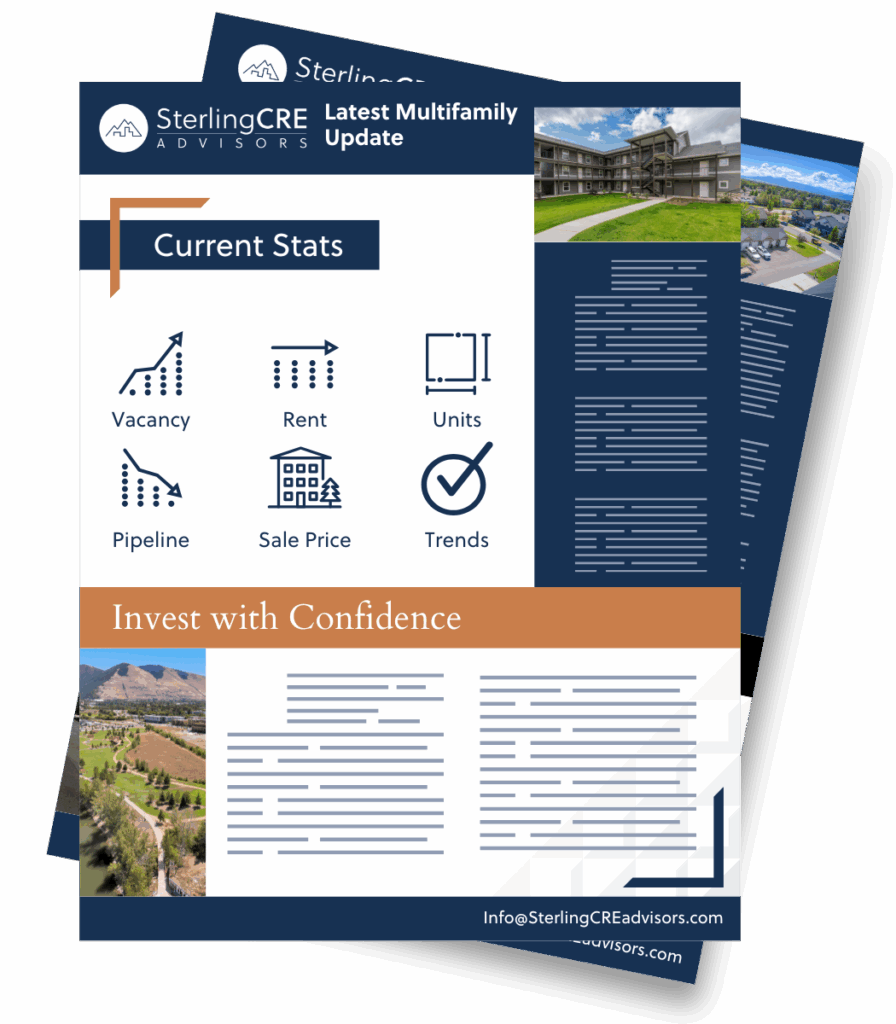If you’re like many property owners we know in Montana, you recently received an unpleasant surprise in the form of your increased property tax assessments.
You should have received your biennial updated property assessment from the Montana Department of Revenue in the last few weeks. Many property owners felt the shock of increases in assessed value over the past two years, with estimated 2023 general tax estimates increasing by 30-50% in many cases.
IMPORTANT LINKS
Forms
Tax Relief Options
Talk to a Commercial Broker
Missoula- Kara Hogan
Bozeman- Ryan Springer, CCIM
For residential, commercial, and industrial properties, the assessed value is based on 100% of the market value. Therefore, any appreciation from the past two years is now reflected in the taxable value. If you look carefully at your 2023 Classification and Appraisal Notice from the state, you’ll see that the “Value increase reason” is often listed as “Market Appreciation.”
What can you do about these huge increases in assessed value?
That ultimately depends on where the mill levies land more so than on your assessed value. When taxable values see large increases, state statute requires the jurisdiction to reevaluate mill levies. Mill levies are the multiplier used to determine the tax liability of your property.
The estimated general taxes noted in your assessment notice are based on the 2022 mill levies, which are subject to change.
Per the Property Assessment Division of Montana the final mill levies are set by local governments and taxing jurisdiction. Voters may also vote to approve certain tax levies such as a school bond, public safety bond, or library bond. It’s crucial to stay informed about these updates, as they will ultimately dictate your property tax liability. By mid-September, Missoula hopes to have mill levies set to determine your property tax liability.
While you can’t control mill levies, you can make an appeal for the assessed taxable value of your property.
How do I get started appealing my Montana Property Tax Value?
If you believe the assessment you received is inaccurate, it’s crucial to act promptly. Property owners have 30 days from receiving the appraisal notice to appeal. You can start your appeal by completing the AB-26 form, available for download from the state’s website. See the comments below for a downloadable copy.
The steps to take action: First, it’s a good idea to connect with a commercial real estate professional who specializes in your area. They’ll have a good sense of the market value of your property.
Dictated by State law, the department must assess property at 100% of its market value. The property assessment division uses three valuation models to determine the assessed value. They are the cost approach, sales comparison approach, and income approach.
Documentation to support your Montana Property Tax Appeal
You’ll want to dig into files to find proper documentation to aid your appeal. A buy-sell agreement, appraisal, or a broker opinion of value offers market value assessments. Additional helpful documents include a cost breakdown for remodeling and income and expense statements for investment properties.
BUT, you’ll want to check document dates carefully. Your documentation, including sales comparables, must be dated within 6 months of January 1, 2022.
If you don’t have any of those items, there is a section on the AB-26 form that allow you to request sales comparables from the state. Alternatively, a commercial broker may be able to provide you with relevant information.
How much time to you have to appeal?
You have 30 days from when you received your assessment to appeal. Most assessments were mailed out on June 30th. Which means you have until July 30th to mail and postmark your appeal. The form should be mailed to the Department of Revenue field office noted on your assessment letter.
Remember, despite filing an appeal, you’re still obligated to pay your taxes based on the assessed value, so make sure you follow the payment timeline provided to you. Even if your property is being re-evaluated, the tax bill must be paid. You’ll need to pay these “under protest”
Does appealing the assessed value work?
There is no guarantee this reassessment will decrease your taxable value. Many of the assessed values we’re seeing on appraisal notices from the state are close to market values. If that’s the case, there’s not much that can be done about it on the assessment appeal side. Your only real form of relief will be through lower mill levies. To make sure that happens, it’s important that you reach out to your local elected officials to make sure your concerns are heard.
For many commercial property owners who have entered into NNN leases with tenants, this tax increase may not take a direct cut out of your bottom line immediately. But, over time the increase in NNN expenses can cause a reduction in base rental rate to ensure businesses can make the “all in” rent pencil.
Appreciation in value is a positive for most commercial property owners, however, an increase in property taxes can be a tough hit to absorb.
An increase in property values and taxes can also be hard on business owners, tenants, and any individuals on fixed incomes. For those facing financial hardships, the state of Montana offers assistance programs. Check out our links section where you’ll find additional resources and information regarding property tax assessments.


